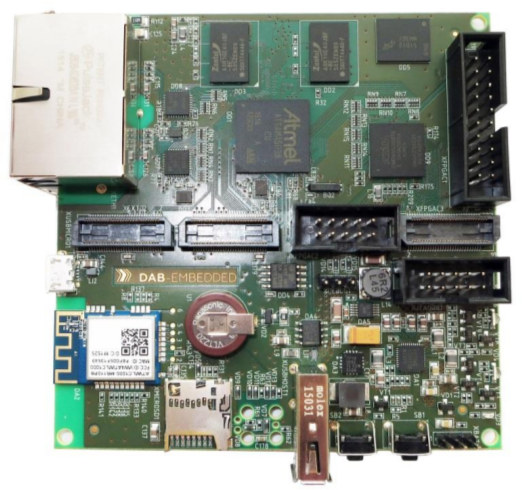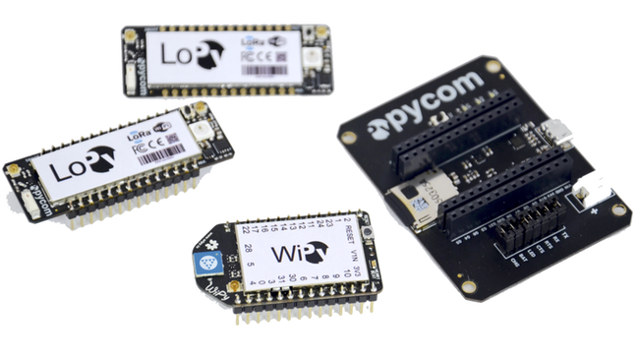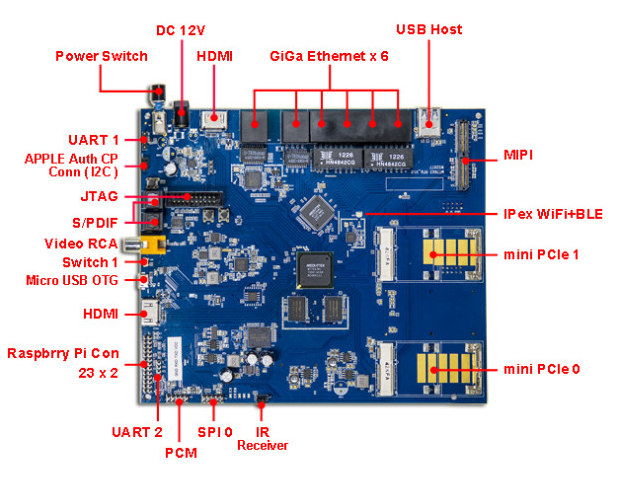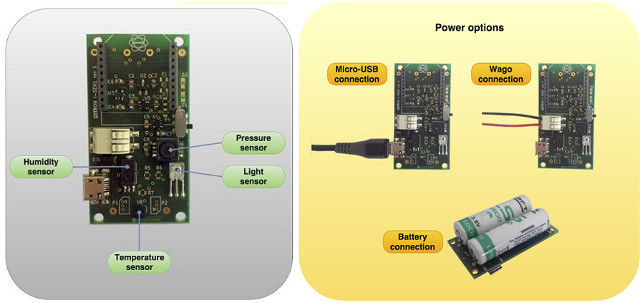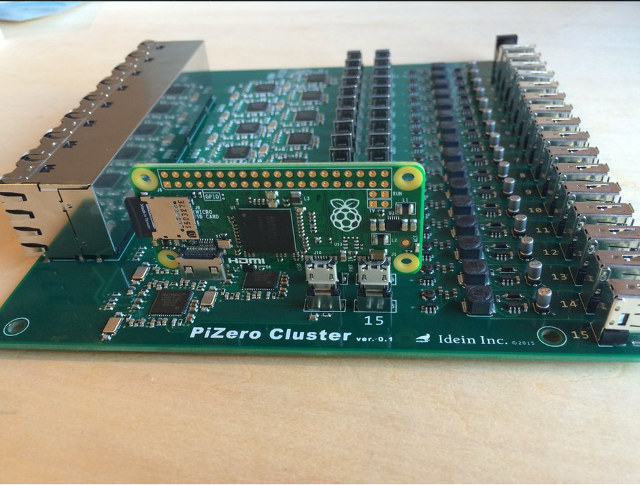DAB Embedded, a Belgian engineering company specialized in research and development of electronic products, has designed DAB-OWT-SAM5 router board powered by Atmel SAMA5D36 Cortex-A5 processor and Altera MAX 10 FPGA, which runs OpenWrt or Windows Embedded Compact 7, and targets IoT applications. DAB-OWT-SAM5 board specifications: SoC – Atmel SAMA5D36 ARM Cortex-A5 processor @ 536MHz with Floating-Point Unit. FPGA – Altera MAX 10 FPGA with integrated ADC (Exact part number not disclosed) System Memory – Up to 512MB DDR2 Storage – Up to 2GB NAND flash, 1Mbit SPI flash, micro SD slot Connectivity – 2x Fast Ethernet ports, 802.11 b/g/n WiFi (Direct, station mode, and soft-AP) via Atmel ATWILC1000B module Display Interface – LVDS connected to FPGA USB – 1x USB 2.0 host, 1x USB 2.0 device Expansion Connectors Wired interfaces – RS232, CAN 2.0 A/B, KNX, RS-485/422, etc… Wireless connectivity – Zigbee, Z-Wave, KNX RF, etc… Power Supply – 5V DC […]
Linaro Connect 2016 Bangkok Schedule – March 7-11, 2016
Linaro Connect Bangkok (BKK16) will take place on March 7 – 11, 2016, and the schedule is now available for the 5-day event with keynotes and sessions. Whether you’re going to attend or not, it’s always interesting to check the schedule to find out what’s going on in terms of ARM Linux development. The five days will focus on work by different Linaro groups, but really sessions are mixed for any given day, and I’ve created a virtual schedule for each day with available information, as Linaro has become a little more closed to the outside than when it was launched a few years ago. Monday 7 – LITE (Linaro IoT & Embedded Group) 1400 – 14:50 – Evolution of the Reference Software Platform Project The Reference Software Platform lead project was introduced in Linaro Connect San Francisco 2015, and since then it evolved and matured with the completion of […]
LoPy Tiny IoT Developer Board Runs MicroPython, Supports LoRa, WiFi and Bluetooth (Crowdfunding)
Pycom launched WiPy last year, a WiFi IoT board based on Texas Instruments CC3200 ARM Cortex M4 SoC, and a few months after sending rewards to their Kickstarter backers, they are back on the crowdfunding platform to launch LoPy, another IoT development board that runs MicroPython and offers LoRa, WiFi and Bluetooth LE connectivity. LoPy board hardware specifications: SoC – Dual processor @ 160 MHz with WiFi & BLE radio with 400 kB RAM, 1MB flash External Storage – 4MB flash Connectivity 802. 11b/g/n @ 16Mbps with WEP, WPA/WPA2 WiFi security; SSL/TLS support; AES encryption engine. Bluetooth Classic and Low Energy LoRaWAN Semtech LoRa transceiver SX1272 @ 868 MHz (Europe) or 915 MHz (North America). Range – Node: Up to 40km; Nano-Gateway: Up to 5 km Nano Gateway Capacity – Up to 100 nodes. Internal chip antenna and u.fl connectors for external antennas Headers – 2x 14-pin headers for: Up […]
$98 Geek Force Mediatek MT7623 Router Board Features 6 GbE Ports, 3 mPCIe Slots for WiFi, 3G, or LTE (Crowdfunding)
We’ve seen a few interesting and relatively powerful router board launched last year, with the likes of MQMaker WiTi or Turris Omnia, AsiaRF has now designed Geek Force board powered by Mediatek MT7623N/MT7623A quad core network processor combined with 2GB RAM, six Gigabit Ethernet ports, and optional 802.11ac and 3G connectivity via the three mPCIe slots available on the board. The board also features two HDMI ports, and supports multimedia capabilities such as H.264, MPEG-2, or VC-1 hardware video decoding. Geek Force board preliminary specifications: SoC – MediaTek MT7623A or MT7623N quad-core ARM Cotex-A7 @ 1.3GHz with Mali-450MP GPU (MT7623N only) System Memory – 2GB DDR3 Storage – 2GB eMMC or NAND Flash + SD card slot up to 128 GB, and maybe SATA via the mPCIe slots Connectivity – 6 Gigabit Ethernet ports (WAN / LAN behavior defined by firmware), 802.11 b/g/n WiFi & Bluetooth 4.0 via MT6625L with […]
Izitron I-SEN1 Environmental Sensors Board Works with XBee Modules
Izitron, a start-up based in the South of France, has designed a board with temperature, pressure, humidity and light sensors and a XBee header to provide a way to monitoring environmental variables for weather monitoring, agriculture, industrial applications, and more. I-SEN1 technical specifications: Sensors Temperature – Microchip MCP9700-E/T0; accuracy: ±4°C Accuracy from 0°C to +70°C | -4°C/+6°C Accuracy from -40°C to +150°C; temperature range: -40 to 125 °C Pressure – Infineon KP236N6165; accuracy: 2%; pressure range: 60 kPa to 165 kPa; temperature range: -40 to 125 °C Humidity – Honeywell HIH-5030-001; accuracy: ±3% RH; range: 0 to 100% RH; temperature range: -40 to 85 °C Light – AMS TSL14S-LF; reponsivity: 16 mV/ (uW/cm2); temperature range: 0 to 70 °C Header for XBee RF module Power Supply 5V via micro USB 5 to 12V via Wago terminal block 2x batteries No power management chip Power on/off button Power consumption – Up […]
Embedded Systems Conference 2016 Schedule – April 13-14
The Embedded Systems Conference 2016 will take place in Boston on April 13-14, and the organizers have now released the schedule, minus some keynotes, which features four main tracks: Embedded Hardware, Embedded Software, Connected Devices and the Internet of Things (IoT), and the ESC Engineering Theatre. As usual, I’ve gone through the list of talks and composed my own little virtual schedule which ended up with sessions focusing on power management, IoT, and security, as well some optimization and drivers development talks among others, such as patents, and the origin of Gerber files. Wednesday 13 8:00 – 9:00 – Power Management in Embedded Systems by Colin Walls, Embedded Software Technologist, Mentor Graphics The importance of power management in today’s embedded designs has been steadily growing as an increasing number of battery powered devices are developed. In this session, we will discuss design considerations that should be made when starting a […]
This is What a 16 Raspberry Pi Zero Cluster Board Looks Like
Idein, a Japanese startup, has been working with a Raspberry Pi compute module to create Actbulb, a multi-functional device for applications using computational sensing and data analysis, and that fits in a regular light bulb socket. But for their internal testing, they’ve decided to create a cluster for 16 Raspberry Pi Zero boards. PiZero Cluster board has 32 micro USB ports for power and data, two for each Raspberry Pi Zero board, 16 USB type A ports, and 16 Ethernet interfaces. They’ve likely done this board for testing their ActBulb, as Koichi Nakamura, Idein CEO & founder mentioned that: We are making a sensing device that uses Raspberry Pi compute module. So we need many Pi’s for the development and tests. Since we will use Pi’s GPU for image processing, deep learning, etc. We need real Pis but not just Linux machines. Another reason. It can be used for flashing […]
Vinclu Gatebox is an IoT Gateway using a Hologram Girl as the User Interface
Let’s face it, home automation or IoT gateways are just boring cubic, rectangular or cylindrical boxes without soul that just transmit packets and gather data between different devices. But don’t despair, as Vinclu, a Japanese start-up, has come up with Gatebox an IoT gateway with a virtual girl, named Hikari Aizuma, that welcomes you back home, turns on the TV on request, wakes you up in the morning and gives the day’s weather forecast, and more! The product is still in development, and we don’t known many details, but the Gatebox is said to uses video projection technologies and various sensors, and you’ll be able to select other characters. The company has raised 90 million JPY (~$770,000 US) and is currently recruiting engineers to complete hardware and software development. The device is expected to be launched at the end of the year via a crowdfunding campaign. You can watch the concept […]


